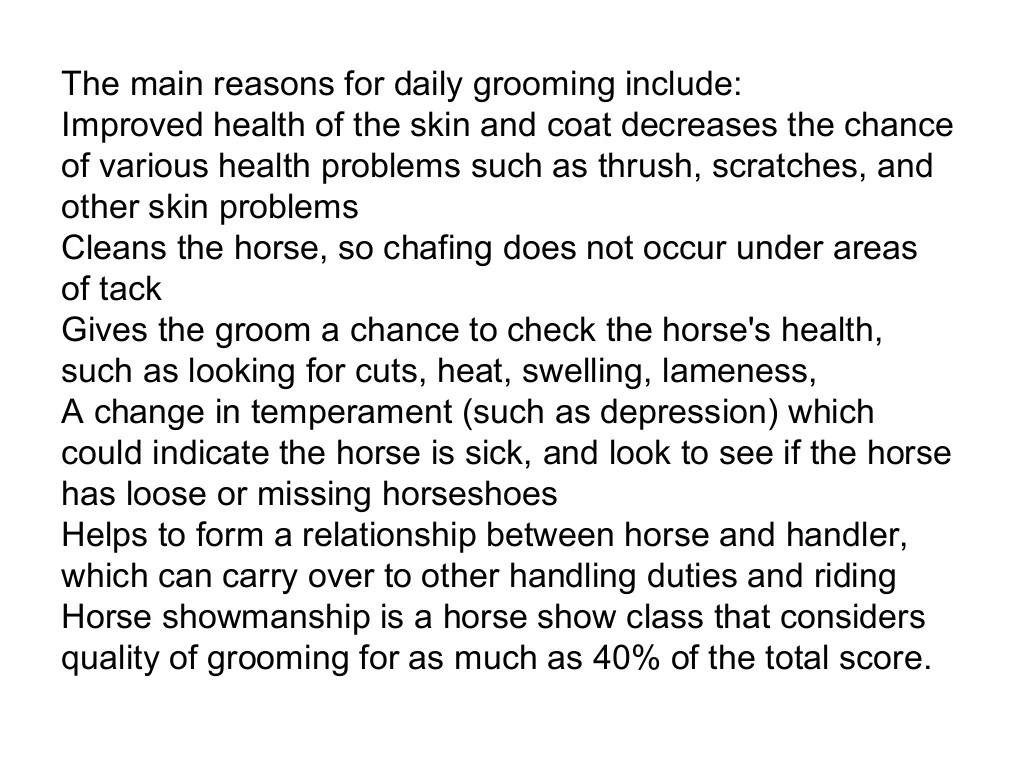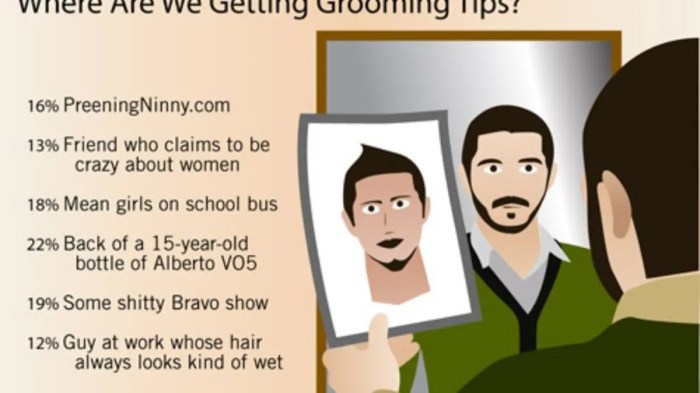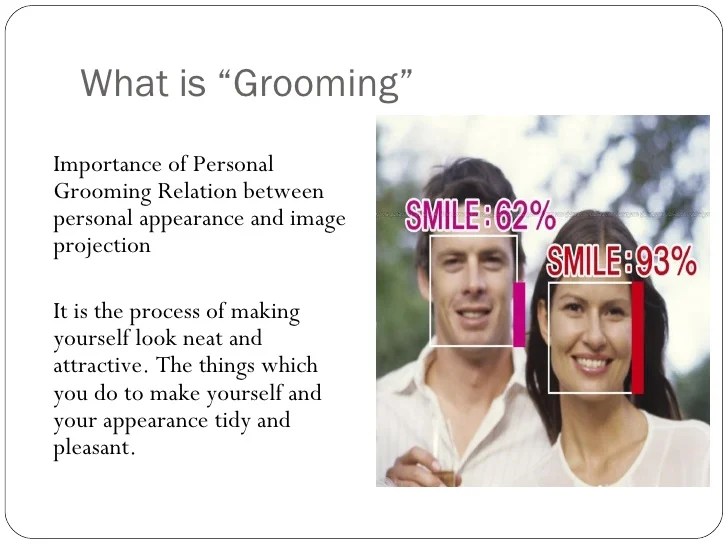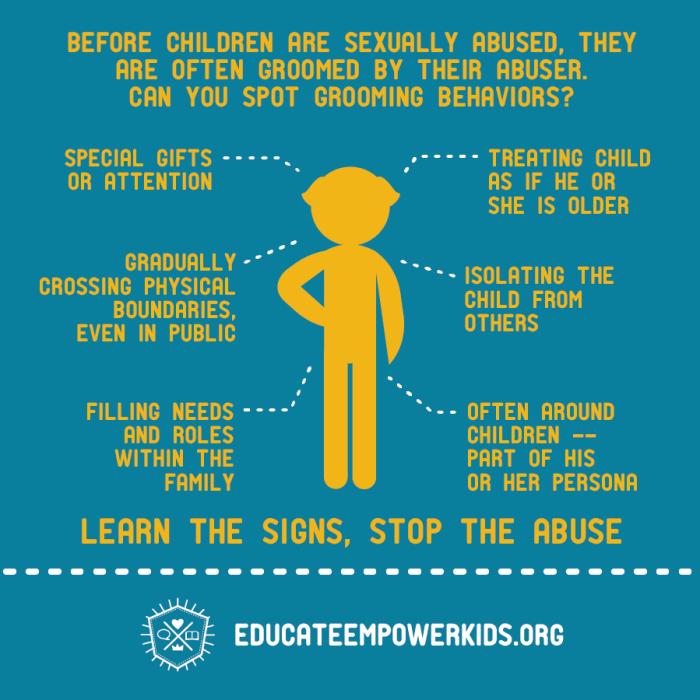Embark on the “Am I Being Groomed Quiz” to uncover the insidious tactics predators employ. By delving into the warning signs and understanding the psychological impact of grooming, you’ll gain invaluable knowledge to safeguard yourself and your loved ones.
This comprehensive quiz will guide you through a series of questions designed to assess your vulnerability to grooming and provide practical advice on how to protect yourself.
Grooming Quiz
Grooming quizzes are self-assessment tools designed to raise awareness and provide insights into potential grooming situations. They help individuals identify concerning behaviors, understand the dynamics of grooming, and take proactive steps to protect themselves or others.
Key Characteristics and Elements
Effective grooming quizzes typically incorporate the following elements:
- Comprehensive Questions:Quizzes cover a wide range of grooming tactics, from subtle forms of manipulation to overt sexual advances.
- Real-Life Scenarios:Questions are presented in relatable and realistic scenarios, making it easier for individuals to identify potential grooming situations.
- Educational Content:Quizzes often include educational information about grooming, its consequences, and resources for support.
- Anonymous and Confidential:Quizzes are typically anonymous and confidential, allowing individuals to feel comfortable sharing sensitive information.
- Immediate Feedback:Quizzes provide immediate feedback, helping individuals understand their risk factors and areas where they may need additional support.
Grooming Tactics

Grooming involves manipulative behaviors used by perpetrators to gain control over and exploit victims. These tactics are designed to build trust, normalize inappropriate behavior, and create a sense of dependency, making it easier for the perpetrator to engage in abusive or exploitative acts.
The psychological impact of grooming on victims can be severe, leading to feelings of guilt, shame, confusion, and isolation. Victims may experience difficulty trusting others, forming healthy relationships, and maintaining self-esteem.
Tactics Used by Perpetrators
Common grooming tactics include:
- Gaining Trust:Perpetrators may establish a connection with the victim by showing interest in their hobbies, sharing secrets, or providing support during difficult times.
- Normalizing Inappropriate Behavior:Perpetrators may gradually introduce inappropriate behavior, such as physical touch or sexual comments, while minimizing or dismissing the victim’s discomfort.
- Creating a Sense of Dependency:Perpetrators may isolate the victim from their support system and make them feel dependent on the perpetrator for emotional or financial support.
- Exploitation:Once the perpetrator has gained trust and control, they may engage in abusive or exploitative behavior, such as sexual abuse, physical violence, or financial exploitation.
Case Studies
A case study of a 15-year-old girl who was groomed by her soccer coach illustrates the tactics used by perpetrators. The coach initially gained her trust by complimenting her athletic abilities and spending time with her outside of practice. He then began making inappropriate comments and physical advances, which he normalized by telling her that it was “part of being a team.”
The girl felt isolated and ashamed, and she eventually engaged in sexual activity with the coach out of fear and confusion.
Another case study of a 20-year-old college student who was groomed by an older professor shows how grooming can occur in different contexts. The professor initially approached the student as a mentor, offering academic support and encouragement. He then began making inappropriate advances, which he excused as “flirting.”
The student felt flattered and flattered, and she eventually engaged in a sexual relationship with the professor. However, the relationship became abusive, and the student experienced feelings of guilt and shame.
Risk Factors
Groomers seek individuals who are vulnerable to manipulation and exploitation. Understanding the risk factors that make individuals more susceptible to grooming can help prevent these heinous crimes.
Individuals who lack strong social support systems, have low self-esteem, or experience social isolation are more likely to be targeted by groomers. Additionally, those with mental health issues or cognitive impairments may be more vulnerable to grooming tactics.
Protective Factors
Protective factors can help mitigate the risk of grooming. These include strong family relationships, positive peer connections, and access to supportive resources. Parents and educators play a crucial role in fostering these protective factors and reducing the risk of grooming.
Recommendations for Parents and Educators, Am i being groomed quiz
- Establish open communication with children and encourage them to talk about their online activities.
- Educate children about grooming tactics and empower them to recognize and report suspicious behavior.
- Monitor children’s online presence and set clear boundaries for internet use.
- Foster a supportive and inclusive environment where children feel comfortable seeking help if they are being targeted.
- Collaborate with schools and community organizations to provide comprehensive prevention and awareness programs.
Warning Signs

Grooming is a deliberate process by which someone gains the trust of a child or young person in order to exploit them sexually. It can be difficult to spot, but there are some warning signs that may indicate that someone is being groomed.
It is important to recognize and report these signs so that the child can be protected from further harm. Some of the key warning signs include:
Changes in Behavior
- Becoming withdrawn or isolated
- Spending excessive time online or on social media
- Hiding their online activity
- Becoming secretive or evasive
- Showing signs of emotional distress, such as anxiety, depression, or anger
Changes in Appearance
- Dressing in a more revealing or provocative manner
- Wearing makeup or jewelry that is not age-appropriate
- Having unexplained bruises or injuries
Changes in Relationships
- Spending more time with older individuals
- Avoiding friends and family
- Becoming isolated from their peers
Other Warning Signs
- Receiving gifts or money from someone they don’t know well
- Being asked to keep secrets
- Being pressured to do things they don’t want to do
If you are concerned that someone you know may be being groomed, it is important to report it to the authorities. You can do this by calling the National Sexual Assault Hotline at 800-656-4673 or by visiting their website at https://www.rainn.org.
Reporting and Intervention

If you suspect someone is being groomed, it is crucial to take action immediately. The following steps can help ensure the safety and well-being of the potential victim:
1. Gather Evidence: Document any suspicious behavior, conversations, or online interactions. This evidence can be helpful for law enforcement and child protection agencies.
2. Report to Authorities: Contact law enforcement or child protection agencies immediately. They have the resources and expertise to investigate and intervene in grooming cases.
3. Seek Professional Help: Reach out to mental health professionals, such as therapists or counselors, who specialize in working with victims of grooming. They can provide support, guidance, and coping mechanisms.
Feeling curious about the ‘am I being groomed’ quiz? If so, then you might also be interested in checking out the Spanish 2 Module 1 DBA . It’s a great resource for students who want to learn more about Spanish.
And after exploring the DBA, you can always come back to the ‘am I being groomed’ quiz to continue your self-discovery journey.
Role of Law Enforcement, Child Protection Agencies, and Mental Health Professionals
Law enforcement, child protection agencies, and mental health professionals play vital roles in responding to grooming cases:
- Law Enforcement:Investigates allegations of grooming, gathers evidence, and arrests suspects.
- Child Protection Agencies:Assess the safety and well-being of children, provide support to victims and families, and work with law enforcement to ensure the protection of children.
- Mental Health Professionals:Provide therapy, counseling, and support to victims of grooming, helping them process the trauma and develop coping mechanisms.
Resources and Support for Victims and Families
There are numerous resources and support systems available for victims of grooming and their families:
- National Sexual Assault Hotline:1-800-656-HOPE (4673)
- Childhelp USA:1-800-422-4453
- The Rape, Abuse & Incest National Network (RAINN):https://www.rainn.org
Prevention and Education

Prevention and education are crucial in combating grooming. By equipping children and adolescents with knowledge and skills, we can empower them to recognize and respond to grooming attempts.
Best practices for teaching children and adolescents about grooming include:
- Open and honest communication: Talk to children about grooming in age-appropriate ways, explaining what it is and how to recognize it.
- Role-playing and simulations: Practice scenarios with children to help them develop strategies for responding to grooming attempts.
- Empowerment: Teach children to trust their instincts and speak up if they feel uncomfortable or unsafe.
- Education about online safety: Discuss the risks of online grooming and teach children how to protect themselves online.
Role of Parents, Schools, and Communities
Parents, schools, and communities all play a vital role in preventing grooming. Parents can provide a safe and supportive environment, monitor their children’s online activity, and talk to them about grooming.
Schools can incorporate grooming prevention into their curriculum, provide resources for students and staff, and create a culture of respect and open communication.
Communities can support grooming prevention by providing training and resources for parents, teachers, and other professionals working with children and adolescents.
FAQ Overview: Am I Being Groomed Quiz
What are the common tactics used by groomers?
Groomers often use tactics such as building trust, isolating victims, and manipulating their emotions.
What are the risk factors that make someone more vulnerable to grooming?
Risk factors include low self-esteem, lack of support, and exposure to online predators.
What should I do if I suspect someone is being groomed?
Report your suspicions to a trusted adult, law enforcement, or child protection agency.